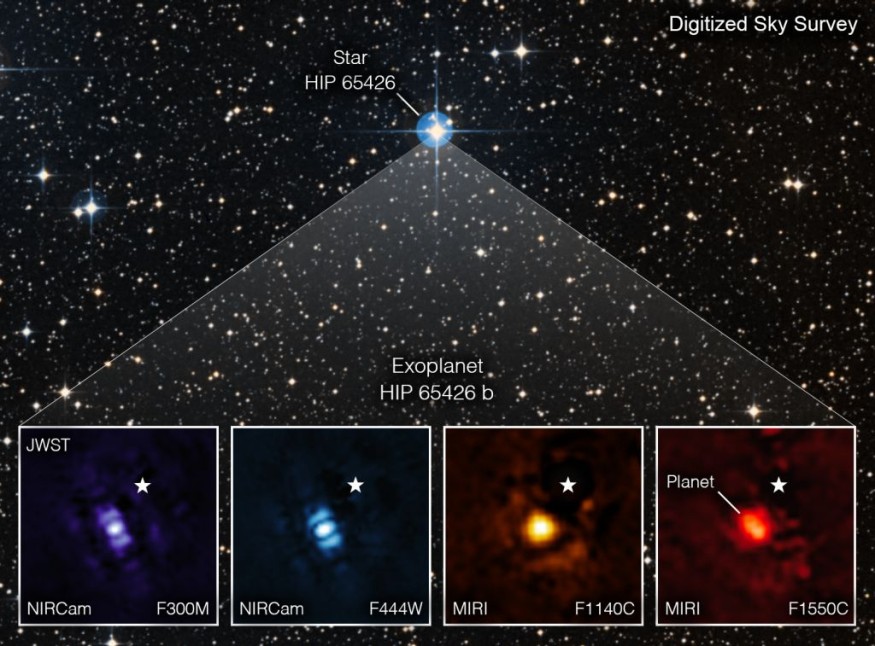On July 12, NASA released the first science images that the James Webb Space Telescope (JWST) captured since it was launched. The space agency said that this marks a new era of astronomy as the world gets its first look at the capabilities of NASA's newest major space telescope.
Indeed, JWST is exceeding expectations and it has already demonstrated its capability of directly capturing the image of an exoplanet and its atmosphere. The new space telescope has proven that it can help scientists study the planet and has even detected carbon dioxide in one exoplanet for the first time.

JWST Snaps Its First Exoplanet
NASA's JWST just captured its first direct image of an exoplanet and shared the images on Thursday. The said planet is dubbed HIP 65426 b and is shown in four different light filters.
"This is a transformative moment, not only for Webb but also for astronomy generally," Associate Professor Sasha Hinkley said in a press release via NASA. "It was really impressive how well the Webb coronagraphs worked to suppress the light of the host star."
Hinkley led the international team of scientists, including members of the European Space Agency (ESA), and the Canadian Space Agency, who observed HIP 65426b.
The exoplanet is located 355 light-years away from Earth and is about six to 12 times more massive than Jupiter, and spins very fast on its axis that it can complete one rotation for just over three hours. Also, it is relatively young for a planet as it is only 15 to 20 million years old, compared to Earth which is 4.5 billion years old.
IFL Science reported that HIP 65426b is about 92 AU from its star or three times the distance between Neptune and the Sun. NASA also said that the planet is so hot with a temperature of about 1,800°F (1,000°C).
Scientists submitted a paper about this planet to the AAS Journal, titled "The JWST Early Release Science Program for Direct Observations of Exoplanetary Systems I: High Contrast Imaging of the Exoplanet Hip 65426 B From 2-16 µm," which is currently available online on ArXiv.
Although scientists do not have a definite answer about the planet's origin, it shows how capable is the JWST in studying exoplanets. But aside from HIP 65426b, scientists also used the space telescope to detect carbon dioxide in another exoplanet.
JWST Detects Carbon Dioxide in an Exoplanet for the First Time
JWST scientists reported in their peer-reviewed paper, titled "Identification of Carbon Dioxide in an Exoplanet Atmosphere" published in Nature, that they detected evidence of carbon dioxide in the atmosphere of the exoplanet WASP-39b. The exoplanet is a Saturn-like world that orbits extremely close to its star and only takes 4.1 days to completely orbit each other.
These observations were part of the space telescope's Early Science Release Program that wraps up the first five months of JWST's science observations, Astronomy reported.
Previous observations from the Spitzer telescope indicated carbon dioxide in the planet's atmosphere, but the data from JWST confirms it in unprecedented detail. Professor Jacob Bean from the University of Chicago told Astronomy that the JWST has validated some of the older measurements of Spitzer.
RELATED ARTICLE : James Webb Space Telescope Captures Sharper Image of Einstein Ring
Check out more news and information on James Webb Space Telescope in Science Times.
© 2025 ScienceTimes.com All rights reserved. Do not reproduce without permission. The window to the world of Science Times.











